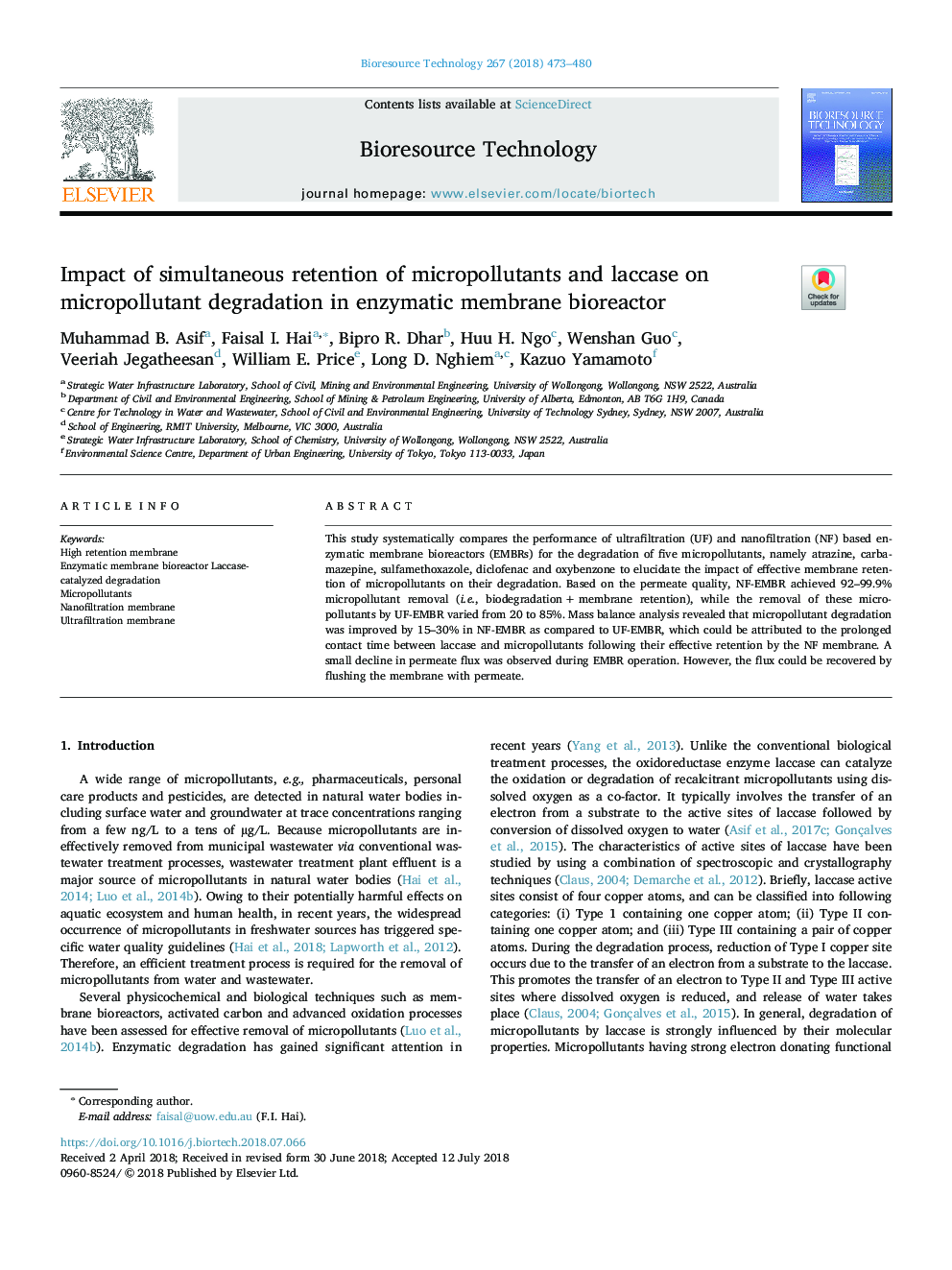| Article ID | Journal | Published Year | Pages | File Type |
|---|---|---|---|---|
| 7065880 | Bioresource Technology | 2018 | 8 Pages |
Abstract
This study systematically compares the performance of ultrafiltration (UF) and nanofiltration (NF) based enzymatic membrane bioreactors (EMBRs) for the degradation of five micropollutants, namely atrazine, carbamazepine, sulfamethoxazole, diclofenac and oxybenzone to elucidate the impact of effective membrane retention of micropollutants on their degradation. Based on the permeate quality, NF-EMBR achieved 92-99.9% micropollutant removal (i.e., biodegradationâ¯+â¯membrane retention), while the removal of these micropollutants by UF-EMBR varied from 20 to 85%. Mass balance analysis revealed that micropollutant degradation was improved by 15-30% in NF-EMBR as compared to UF-EMBR, which could be attributed to the prolonged contact time between laccase and micropollutants following their effective retention by the NF membrane. A small decline in permeate flux was observed during EMBR operation. However, the flux could be recovered by flushing the membrane with permeate.
Related Topics
Physical Sciences and Engineering
Chemical Engineering
Process Chemistry and Technology
Authors
Muhammad B. Asif, Faisal I. Hai, Bipro R. Dhar, Huu H. Ngo, Wenshan Guo, Veeriah Jegatheesan, William E. Price, Long D. Nghiem, Kazuo Yamamoto,
